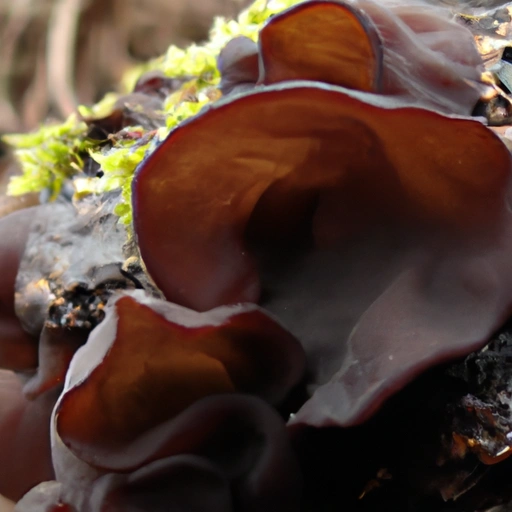Wood Ear Mushroom
Description

Wood Ear Mushroom, known scientifically as Auricularia auricula-judae, is a distinctive fungus prized for its chewy texture and mild flavor. Often appearing in Asian dishes, this mushroom can be recognized by its ear-like shape and dark, slightly translucent appearance. Wood Ear Mushrooms soak up the flavors of the ingredients they're cooked with, making them a versatile addition to a variety of recipes.
Common uses
Commonly found in soups, stir-fries, and salads, Wood Ear Mushrooms are often used as a crunchy, flavorful ingredient. They are also popular in vegetarian and vegan dishes as a meat substitute due to their texture.
Nutritional value
Calories
A 1-cup serving (about 99g) of Wood Ear Mushrooms contains approximately 80 calories.
Protein
They provide around 0.9g of protein per 1-cup serving.
Fat
These mushrooms are low in fat, with less than 0.2g per serving.
Carbohydrates
The carbohydrate content is about 19.6g per serving, most of which comes from dietary fiber.
Vitamins
Wood Ear Mushrooms are a source of several vitamins, including vitamin D and small amounts of the B-vitamins.
Minerals
They are rich in minerals such as iron and potassium. A serving can provide about 2.7mg of iron and 318mg of potassium.
Health benefits
Wood Ear Mushrooms are known for their health-promoting properties. They are high in dietary fiber, which aids in digestion and cholesterol management. The presence of antioxidants helps fight free radicals, and the mushrooms are also believed to improve circulation and support heart health.
Potential risks
While generally safe for consumption, Wood Ear Mushrooms can interfere with blood-thinning medications due to their blood-thinning properties. Individuals with mushroom allergies should also avoid consuming these fungi.
Common recipes
Wood Ear Mushrooms are featured in recipes such as Hot and Sour Soup, Moo Shu Vegetables, and Asian-style salads. They are also used in Szechuan and Hunan cuisines to add texture to dishes.
Cooking methods
These mushrooms can be eaten raw or cooked. Cooking methods include stir-frying, boiling, and steaming. When dried, they need to be rehydrated in water before use.
Pairing with other ingredients
Wood Ear Mushrooms pair well with ingredients like soy sauce, garlic, ginger, and green onions. They also complement meats like pork and chicken and other vegetables such as bamboo shoots and carrots.
Summary
The Wood Ear Mushroom is an adaptable ingredient with a rich history in Asian cuisine and a growing presence in global kitchens. With its unique texture and nutritional benefits, it offers a special element to a wide range of dishes while also contributing to a healthy diet. Whether you're an experienced chef or a home cook, incorporating Wood Ear Mushrooms into your recipes can add an exciting twist to your culinary creations.